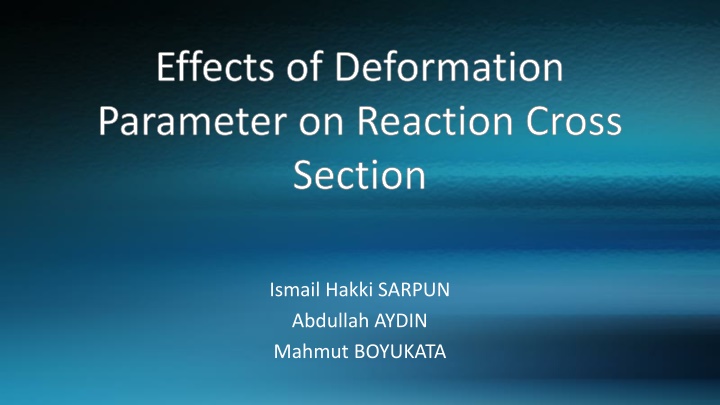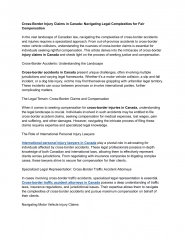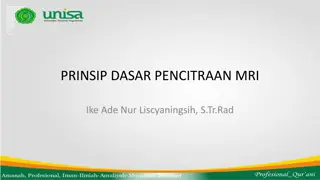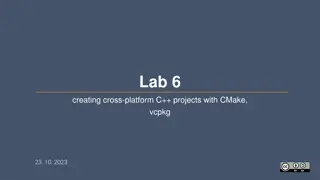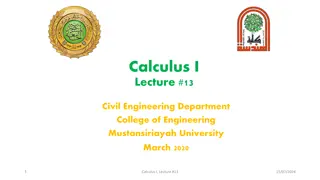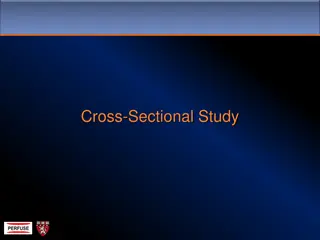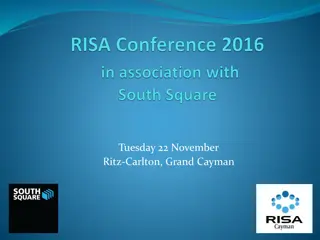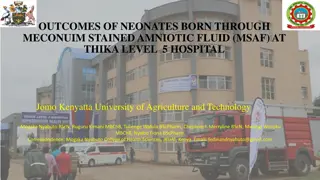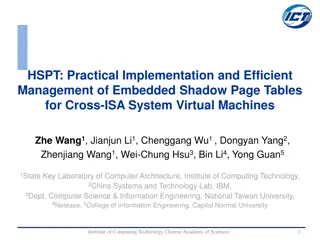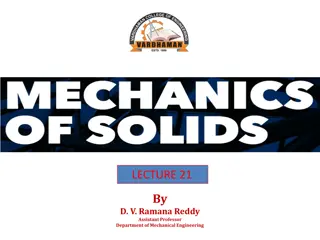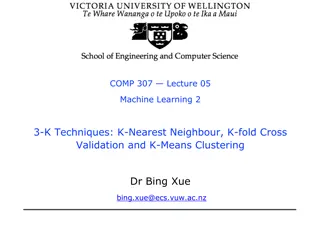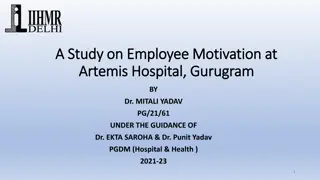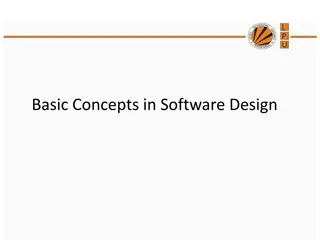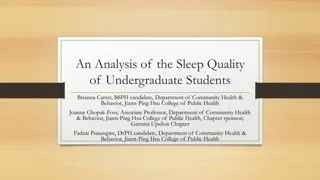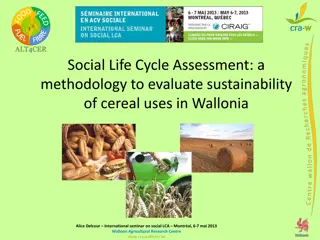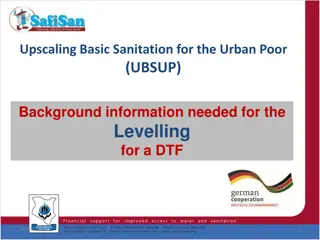Cross-Sectional Studies: Concepts, Uses, Design, and Implementation
Cross-sectional studies are observational designs that assess disease and exposure levels at a single point in time in a defined population. This lecture covers the objectives, advantages, and disadvantages of cross-sectional study design, emphasizing the importance of recognizing concepts, understanding features, and conducting such studies effectively. It discusses how to run a cross-sectional study, formulate research questions, choose sample populations, collect data, summarize findings, and analyze results using tools like odds ratios.
Download Presentation

Please find below an Image/Link to download the presentation.
The content on the website is provided AS IS for your information and personal use only. It may not be sold, licensed, or shared on other websites without obtaining consent from the author.If you encounter any issues during the download, it is possible that the publisher has removed the file from their server.
You are allowed to download the files provided on this website for personal or commercial use, subject to the condition that they are used lawfully. All files are the property of their respective owners.
The content on the website is provided AS IS for your information and personal use only. It may not be sold, licensed, or shared on other websites without obtaining consent from the author.
E N D
Presentation Transcript
Effects of Deformation Parameter on Reaction Cross Section Ismail Hakki SARPUN Abdullah AYDIN Mahmut BOYUKATA
Objective Deformation parameter of the nuclei is one of the important arguments for the nuclear structure studies. We focused on the effects of the deformation parameter on the cross sections. We first determined the deformation parameters of target nuclei within IBM (interacting boson model). For this process, the energy levels of the target nucleus have been calculated by fitting the Hamiltonian parameters and then these parameters were used in the formalism of the potential energy surface to find the deformation parameter ( ). We later used this parameter in the TALYS 1.8 code for the calculation of the cross sections on the some reactions up to various energy to see its effects. Moreover, we used other deformation parameters obtained TALYS default for the cross section calculation and compared with each other and also the experimental data from EXFOR nuclear data library. Joint ICTP-IAEA Workshop on the Evaluation of Nuclear Reaction Data for Applications | 02-13 October 2017 | ICTP | Trieste, ITALY isarpun@gmail.com 2/26
110Pd(d,n)111Ag Reaction Three deformation parameters were used in theoretical calculations which are TALYS 1.8 default value (equal to 0.257 and shown as black solid line), RIPL value (equal to 0.212 and shown as red solid line) and calculated value (equal to 0.439 and shown as yellow solid line). Joint ICTP-IAEA Workshop on the Evaluation of Nuclear Reaction Data for Applications | 02-13 October 2017 | ICTP | Trieste, ITALY isarpun@gmail.com 3/26
110Pd(d,2n)110mAg Reaction With same parameters *This work accepted to publish in Physics of Atomic Nuclei Joint ICTP-IAEA Workshop on the Evaluation of Nuclear Reaction Data for Applications | 02-13 October 2017 | ICTP | Trieste, ITALY isarpun@gmail.com 4/26
First Conclusion The target nucleus 110Pd shows axially deformed shape and its geometry is like prolate since the deformation parameter is bigger than zero. After determine this parameter, we calculated cross sections of these two reactions to see effects of deformation parameter on reaction cross section. The realistic shape of the coulomb barrier is an individual property of each nuclei and depends on the collective degrees of freedom such as deformation and shell-model degrees of freedom. Therefore, in realistic shape of the coulomb barrier, there are double-humped or in some nuclei, three-humped barrier for deformed nuclei which effect the reaction cross section. As expected, when the deformation parameter increased, reaction cross sections decreased, which is the same situation in our calculations as shown in Figs. Joint ICTP-IAEA Workshop on the Evaluation of Nuclear Reaction Data for Applications | 02-13 October 2017 | ICTP | Trieste, ITALY isarpun@gmail.com 5/26
150Nd(g,2n)148Nd Reaction Joint ICTP-IAEA Workshop on the Evaluation of Nuclear Reaction Data for Applications | 02-13 October 2017 | ICTP | Trieste, ITALY isarpun@gmail.com 6/26
150Nd(p,2n)149Pm Reaction Joint ICTP-IAEA Workshop on the Evaluation of Nuclear Reaction Data for Applications | 02-13 October 2017 | ICTP | Trieste, ITALY isarpun@gmail.com 7/26
152Sm(n,g)153Sm Reaction Joint ICTP-IAEA Workshop on the Evaluation of Nuclear Reaction Data for Applications | 02-13 October 2017 | ICTP | Trieste, ITALY isarpun@gmail.com 8/26
152Sm(n,p)152Pm Reaction Joint ICTP-IAEA Workshop on the Evaluation of Nuclear Reaction Data for Applications | 02-13 October 2017 | ICTP | Trieste, ITALY isarpun@gmail.com 9/26
Last Conclusion Deformation parameter Coulomb barrier Cross Section relations have observed again For future study: Selection of oblate and prolate nuclei : What about neutron induced reactions : What about neutron emission Joint ICTP-IAEA Workshop on the Evaluation of Nuclear Reaction Data for Applications | 02-13 October 2017 | ICTP | Trieste, ITALY isarpun@gmail.com 10/26
TESNAT 2018 20-22 April 2018, Antalya, Turkey 4thInternational Conference on Theoretical and Experimental Studies in Nuclear www.tesnat.org Applications and Technology Joint ICTP-IAEA Workshop on the Evaluation of Nuclear Reaction Data for Applications | 02-13 October 2017 | ICTP | Trieste, ITALY isarpun@gmail.com 11/26
